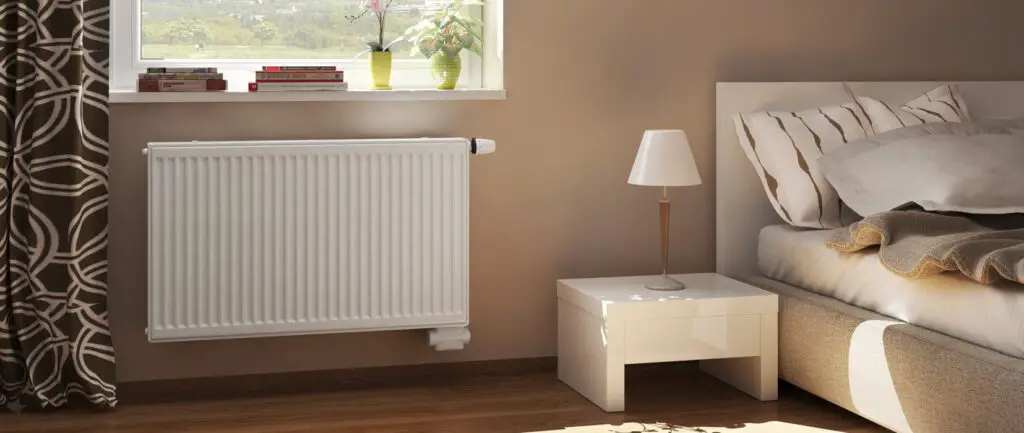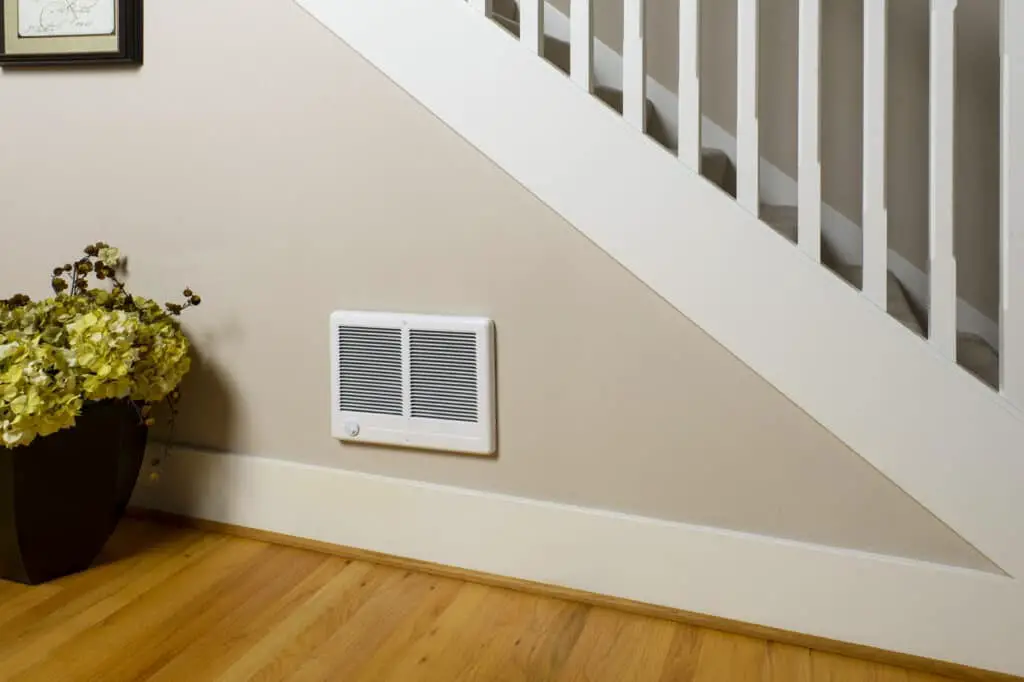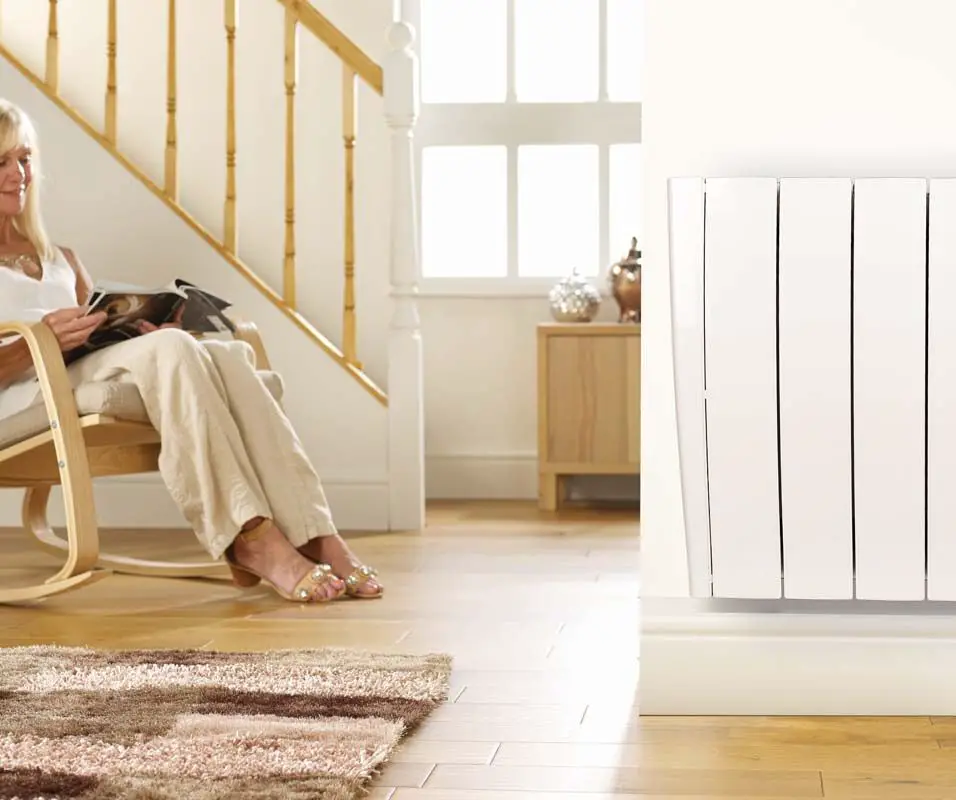What Is The Best Space Heater For Large Rooms
Introduction
Which space heater is best for big rooms: Come to the global community of heating systems that work well. Here, we start our search for the ideal space heater for big rooms. As the weather gets colder and winter sets in. It becomes more and more important to have a space heater that you can count on and that is strong. When working with large living rooms, open layouts, or rooms that let in a lot of drafts. We will talk about the features, tools, and things to think about in this in-depth guide. Explain what the best space heater for a bigger room can do.
Keeping a room comfy and cozy can be harder in big rooms. Normal central heating systems might have trouble spreading heat evenly over these large areas. Causes differences in warmth and more energy bills. Large-room space heaters are a cheap and energy-efficient way to keep warm in these situations. Although, there are many choices on the market. Choosing the right room heater for your needs can be hard.
As we look into this topic, we will not only find the best space heating systems for bigger rooms. but also give you the information and ideas you need to make a smart choice. Learning about heating devices and safety features, as well as judging how portable they are and how much heat they can produce. No stone will be left unturned as we search for the best and most reliable space heaters.
Whether you’re seeking to warm up a spacious living room, a drafty bedroom, or an open-concept kitchen. Our journey to find the best space heater for large rooms will empower you to make a choice that ensures your home remains a sanctuary of warmth and comfort during the coldest months of the year. So, let’s embark on this exploration together and discover the perfect solution to keep your large space cozy and inviting throughout the winter season.

What type of heater is best for a large room?
Oil-filled space heaters
An oil-filled design could prove one of the best types of space heater to select for medium to large room. One of them has the advantage over a space warmer with a fan in that it won’t keep you up at night, making it suitable for use in your bedroom, for instance.
Choosing the best type of heater for a large room largely depends on your heating needs, preferences, and the room’s characteristics. Three common types of heaters suitable for large rooms are infrared heaters, ceramic heaters, and convection heaters.
Infrared Heaters: Infrared heaters emit radiant heat, warming objects and people directly in their path. They are excellent for large rooms as they provide focused, spot heating. The rapid heating and localized heating options make them an efficient heating choice. However, they may not distribute heat evenly in very large spaces with many obstacles.
Ceramic Heaters: Ceramic heaters use ceramic heating elements and a fan to distribute warm air. They are versatile and can heat larger rooms effectively due to their fan-assisted convection. Ceramic heaters are known for their quick heating and energy efficiency, making them suitable for larger spaces.
Convection Heaters: Convection heaters warm the air in a room through natural air circulation. They are generally slower to heat a room compared to infrared or ceramic heaters but are effective in maintaining consistent warmth in large rooms. Convection heaters are often larger in size and may require more space.
The best type of heater for your large room depends on factors like your heating preferences, budget, and room layout.
What size of heater do I need for a large room?
As a rule of thumb, you will need 10 watts of heating power for every square foot of floor area in a room. This means that a 1,500-watt heater can be the primary heat source for an area measuring up to 150 square feet. However, it can heat a much bigger area if utilized as a supplementary heating source.
Determining the right heater size for a large room is crucial to ensure effective heating. To find the appropriate size, you’ll need to consider the room’s square footage, insulation, and the desired temperature rise.
For an average-sized, well-insulated room (around 150 square feet), you would generally need a heater with a rating of 1,500 watts or approximately 5,000 BTUs. However, for a larger room, especially one with poor insulation or high ceilings, you may need a heater with a higher output.
As we look into this topic, we will not only find the best space heating systems for bigger rooms. but also give you the information and ideas you need to make a smart choice. Learning about heating devices and safety features, as well as judging how portable they are and how much heat they can produce. No stone will be left unturned as we search for the best and most reliable space heaters.
Do space heaters work in large rooms?
The bigger the heating output, the larger the room space heater can heat up. Most common electric 1,500W heating elements can provide supplemental heating to big 1,000 sq ft rooms. Fan. Draws in the colder room air and expels out the heater’s hotter air.
Yes, space heaters can work in large rooms, but their effectiveness depends on several factors:
Heater Size: As mentioned earlier, choosing the right-sized heater for your large room is essential. An adequately sized heater will effectively warm the space, while an undersized one may struggle to maintain a comfortable temperature.
Heating Technology: Different types of heaters have varying levels of effectiveness in large rooms. Infrared heaters are excellent for spot heating and can work well in specific areas within a large room.
Room Insulation: The room’s insulation quality plays a significant role in how well a space heater works. Well-insulated rooms will retain heat better, making it easier for the heater to maintain a comfortable temperature.
Placement: Proper heater placement is crucial. This allows for better heat distribution.
Supplemental Heating: In very large or poorly insulated rooms, it may be more practical to use a space heater as a supplemental heat source alongside your central heating system.
While space heaters can work effectively in large rooms, it’s important to choose the right type and size of heater and take into account the room’s insulation and layout for the best results.
What is the cheapest way to heat a large room?
The cheapest way to get a quick blast of heat in a room
In that case, an electric heater is a good option to give you heat temporarily. Electric heaters consist of oil heaters and fan heaters. If you are investing in an electric heater, be mindful of how powerful it is and how much it costs to run.
The cheapest way to heat a large room while maintaining energy efficiency involves a combination of strategies:
Use a Space Heater: Invest in an energy-efficient space heater, ideally one with a programmable thermostat and energy-saving modes. This allows you to heat only the occupied areas, saving energy and money.
Improve Insulation: Enhance the room’s insulation by sealing gaps around windows and doors, adding weatherstripping, and insulating the attic, walls, and floors. This prevents heat loss, reducing the overall heating costs.
Use Ceiling Fans: If the room has high ceilings, ceiling fans can help distribute warm air more evenly. Set the fan to rotate clockwise at a low speed to push rising warm air back down.
Optimize Heating Times: Set your space heater or central heating system to operate at lower temperatures when you’re away or sleeping and raise the temperature when you’re present. Programmable thermostats are excellent for automating this process.
Consider Zone Heating: Divide your large room into heating zones, using space heaters in the areas you frequently occupy and lowering the thermostat for the rest of the space. This targeted approach can lead to substantial energy savings.
Seal Drafts: Identify and seal any drafts in the room, as drafts can significantly impact heating costs.
Wear Warm Clothing: Encourage everyone in the household to dress warmly during colder months. Layering clothing and using blankets can help reduce the need for higher heating temperatures.
By using these tips, you can heat a big room efficiently and affordably, while also cutting down on costs and energy use. Also, keep in mind that a mix of these methods is often the best way to get a comfortable and inexpensive heating option.
What is better than a space heater?
However, if you’re using space heaters in several areas of your home, you could be wasting money, instead of saving it. It’s a common misconception that space heaters will always save you money. If you’re using several of them, central heating could be the much better option.
While space heaters are a convenient and effective way to provide supplemental heat in specific areas, there are alternatives depending on your heating needs and the size of the space.
Here are some options that may be considered “better” than a space heater in certain situations:
Central Heating Systems: For heating an entire house or building, central heating systems, such as Most of the time, boilers or heat pumps work better and more consistently than space heaters. They can keep the temperature even throughout the room and are usually better for bigger rooms because they use less energy.
Fireplaces or Wood Stoves: If you’re looking to create a cozy ambiance while heating a room, a traditional fireplace or wood-burning stove can be an excellent choice. They provide both warmth and a pleasant visual focal point. However, they require proper ventilation and maintenance.
Radiant Floor Heating: Radiant floor heating is a luxurious and efficient option for heating larger spaces. It involves heating coils or pipes installed under the floor, which radiate heat upward. It provides consistent, even heating but can be expensive to install.
Ductless Mini-Split Systems: Ductless mini-split heat pumps are energy-efficient and suitable for both heating and cooling. They are an excellent choice for individual rooms or zones, offering precise temperature control and energy savings.
Underfloor Heating: Similar to radiant floor heating, underfloor heating systems warm the entire floor surface, providing even heat distribution.
Smart Thermostats: While not a heating source on their own, smart thermostats can significantly enhance the efficiency of your existing heating system. They allow you to program heating schedules, control temperature remotely, and optimize energy use.
The choice of heating solution depends on factors like the size of the space, your heating goals, budget, and personal preferences. Space heaters are a cost-effective choice for targeted heating, but for whole-house heating or larger areas, exploring the options above may be more suitable.
Which type of heater is best for health?
Halogen Room Heaters
They use halogen rods to spread warmth and the current models use light as a source of heat, making them one of the safest heaters available. Halogen heaters are very efficient because the light emitted from them is predominantly invisible infrared (heat).
Several factors should be considered to ensure indoor air quality and safety:
Electric Heaters: Electric heaters are generally considered safer for indoor air quality compared to fuel-burning heaters like kerosene or propane heaters. They don’t emit fumes or produce carbon monoxide, which can be harmful to health.
Infrared Heaters: Infrared heaters are often considered a healthier option because they heat objects and people directly without heating the air. This can help prevent dry air and maintain comfortable humidity levels in the room.
HEPA Air Purifiers: While not heaters themselves, HEPA air purifiers can be used alongside heaters to improve indoor air quality. They remove airborne particles and allergens, ensuring cleaner and healthier air.
Low-Maintenance Heaters: Choose heaters that require minimal maintenance to avoid dust buildup and allergen circulation. Many electric heaters, such as ceramic and oil-filled radiators, are relatively easy to maintain.
Safety Features: Look for heaters with safety features like tip-over protection and overheat protection to reduce the risk of accidents and fires.
Proper Ventilation: Ensure the room is adequately ventilated when using any type of heater to prevent the buildup of indoor air pollutants. This is especially important when using fuel-burning heaters or wood-burning stoves.
Regular Cleaning: Regardless of the type of heater, regular cleaning and maintenance are essential to prevent the accumulation of dust and debris that can affect indoor air quality.
Which heater is best for bedroom?
A Recap of Our Recommendations
- BEST OVERALL: Dr Infrared Heater Portable Space Heater, 1500-Watt.
- BEST BANG FOR THE BUCK: Lasko 5775 Electric 1500W Ceramic Space Heater.
- UPGRADE PICK: De’Longhi Oil-Filled Radiator Space Heater 1500W.
- BEST OIL-FILLED: PELONIS Oil Filled Radiator Portable Space Heater.
Choosing the best heater for a bedroom is crucial for ensuring a comfortable and restful sleep environment. Several factors should be considered when selecting a heater for this specific space:
Safety: Safety should be a top priority in the bedroom. Look for heaters with safety features that make it less likely that something will go wrong, like tip-over and overheat safety and cool-to-touch exteriors.
Noise Level: A quiet heater is essential for bedrooms to ensure a peaceful sleep environment. Convection heaters or oil-filled are generally quieter options compared to fan-forced heaters.
Size and Portability: Opt for a compact and portable heater that can easily fit in your bedroom and be moved to different locations as needed. This provides flexibility in targeting heat where it’s most needed.
Energy Efficiency: Choose an energy-efficient heater to keep heating costs in check. Look for heaters with multiple heat settings and programmable heaters to get the most out of your energy use.
Heating Technology: Infrared heaters are a good choice for bedrooms as they provide comfortable and even heating without drying out the air. They heat objects and people directly, creating a cozy atmosphere.
Timer Function: Heaters with timer functions allow you to set a specific time for the heater to turn on or off, ensuring you wake up to a warm room or have it automatically turn off during the night.
Remote Control: Some heaters come with remote controls, making it convenient to adjust the temperature or settings from the comfort of your bed.
Maintenance: Consider heaters that are easy to clean and maintain to ensure they continue to operate efficiently.
Which type of heater is best?
An oil-filled radiator will be best if you want your entire room to be heated in an even manner. For other types of heaters, it will depend on the size of the room and its capacity.
The choice of the best type of heater depends on various factors, including your heating needs, the size of the space, energy efficiency, and personal preferences. Here are some common types of heaters and their suitability for different situations:
Electric Heaters: Electric heaters, such as ceramic heaters and radiant heaters, are versatile and widely used for small to medium-sized spaces. They are energy-efficient and easy to use, making them a popular choice for quick and targeted heating.
Infrared Heaters: Infrared heaters are excellent for spot heating and providing direct warmth to people and objects. They are energy-efficient and do not dry out the air, making them a good choice for maintaining comfortable humidity levels.
Convection Heaters: Convection heaters, including Baseboard and radiator heaters that are filled with oil are great for bigger rooms or heating the whole house. They let air flow naturally.to warm the space evenly.
Propane Heaters: Propane heaters are commonly used in outdoor settings or spaces without electricity.
Kerosene Heaters: Kerosene heaters are another option for outdoor use or areas without electricity.
Wood-Burning Stoves: Wood-burning stoves are a traditional and effective way to heat large spaces. They provide both warmth and a cozy ambiance but require proper setting up, maintaining, and ventilating.
Ductless Mini-Split Heat Pumps: Ductless mini-split systems are ideal for heating and cooling individual rooms or zones.
Radiant Floor Heating: Radiant floor heating systems are a luxurious choice for heating large spaces. They provide even heat distribution by warming the floor surface, but installation can be costly.
The best type of heater for your specific situation will depend on factors such as the size of the space, your heating goals, energy Thoughts on efficiency, safety concerns, and budget constraints. It’s essential to assess your needs carefully and choose a heater that aligns with your needs and tastes.

Conclusion
Our quest to find the best space heater for large rooms has taken us on a journey through the world of heating technology, energy efficiency, safety features, and practical considerations. As we wrap up this exploration, it’s essential to recap some key takeaways to help you make the right choice for your heating needs in larger spaces.
First and foremost, we’ve learned that there is no one-size-fits-all solution when it comes to space heaters for large rooms. Your choice should be based on the size of the room, how well it is insulated, and your personal heating tastes. Infrared heaters, zirconia heaters, and induction heaters are all good at different things and meet different needs for warmth and efficiency.
We’ve also talked about how important it is for any space radiator you choose to have safety features. To make sure the safety of your family, you must insist on features like tip-over protection, heating protection, and cool-to-touch exteriors.
The size and flexibility of the space heater you choose are also very important. To keep your big room comfortably warm, you need a heater with enough heating power and portability to move it to where it’s desired most.
Another important thing to think about is how energy efficient the home is, as this affects both your health and your wallet. To get the most out of your energy use, look for heaters with adjustable thermostats, more than one heat setting, and energy-saving modes.




